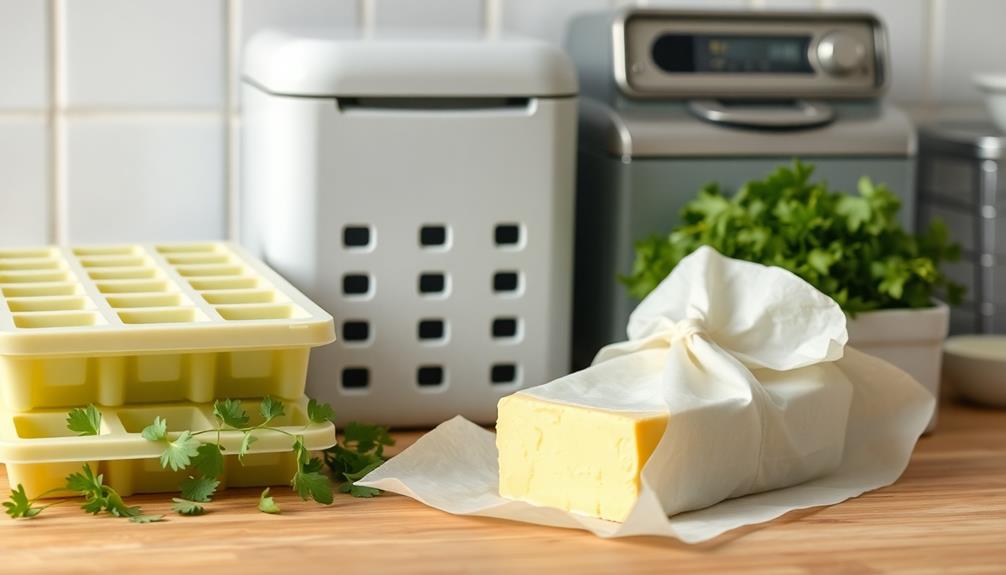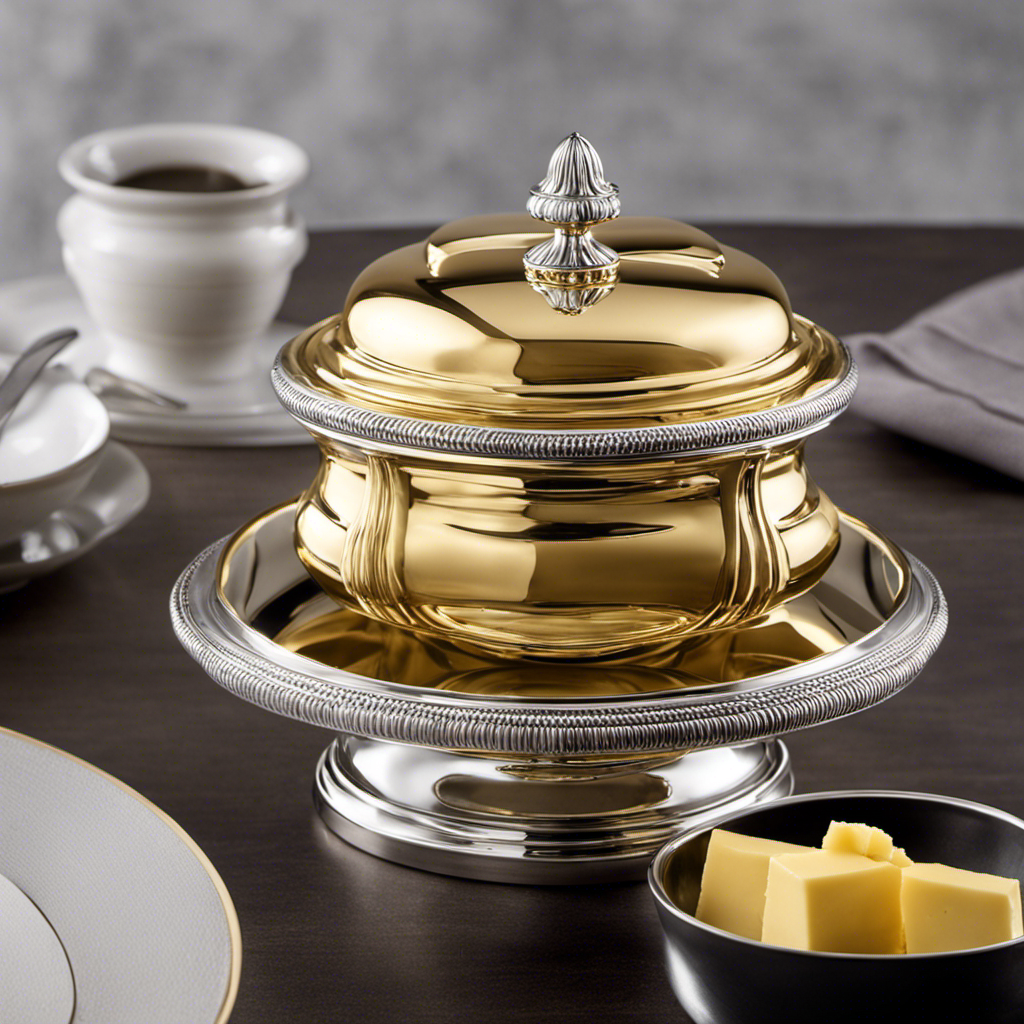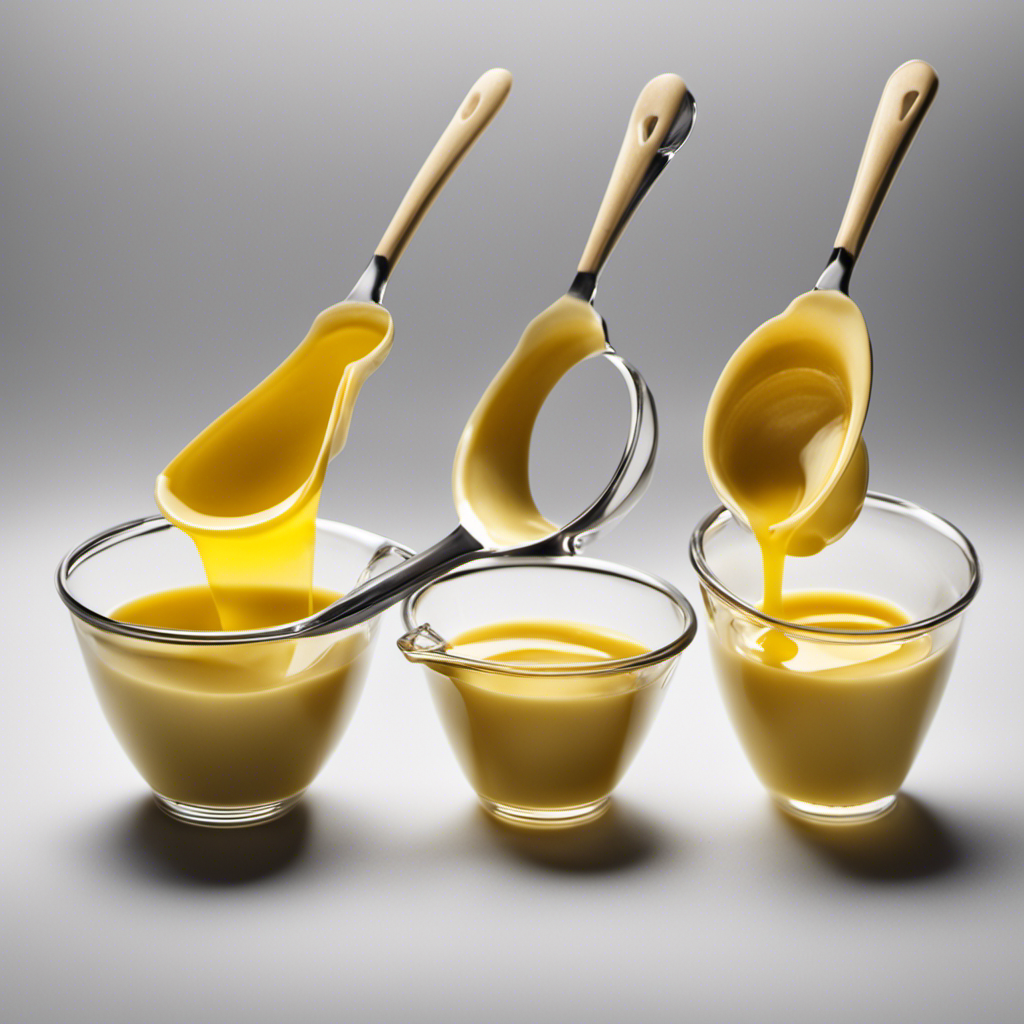Freezing butter is a smart way to save money and extend its shelf life. You can buy in bulk when prices drop, ensuring you always have butter when you need it. Cut your butter into smaller pieces for quick freezing and easy access later, wrapping it tightly in plastic wrap or aluminum foil to prevent freezer burn. Store it in airtight containers or resealable bags and label with the date. When you're ready to use it, thaw in the fridge or grate it for quick melting. There are many creative ways to enjoy frozen butter, and you'll discover even more tips ahead!
Key Takeaways
- Cut butter into smaller pieces for quicker freezing and easier portion control during use.
- Wrap butter tightly in plastic wrap or aluminum foil to prevent freezer burn and maintain quality.
- Use ice cube trays to create convenient butter portions that can be easily accessed later.
- Always label and date the butter to track freshness and ensure optimal usage.
- Thaw butter gradually in the refrigerator or use the microwave's defrost setting for safe, quick thawing.
Benefits of Freezing Butter
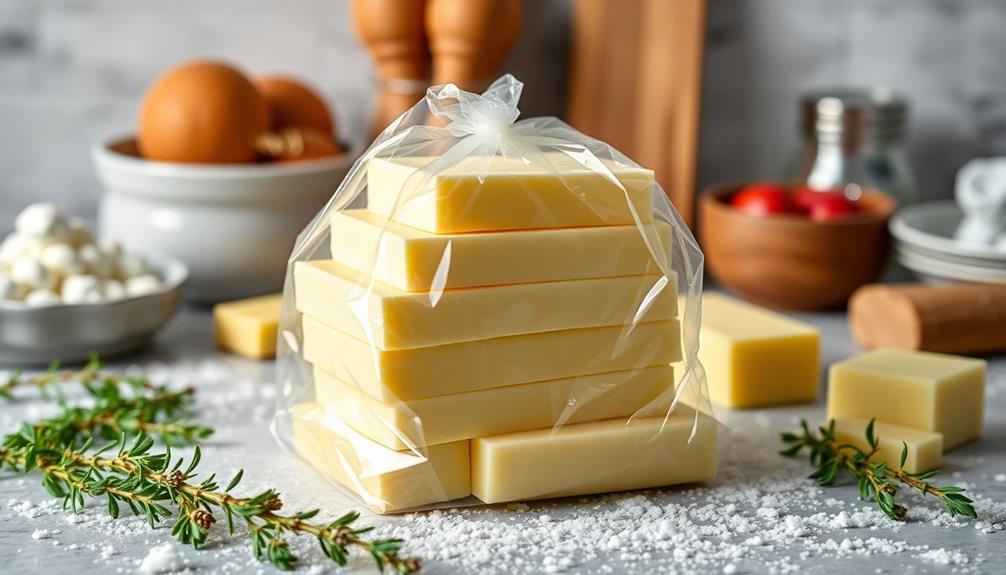
Freezing butter offers a range of benefits that can simplify your cooking and baking routine. First off, it helps you save money. By buying butter in bulk and freezing it, you can take advantage of sales and guarantee you always have some on hand. This means fewer trips to the store and less chance of running out when you need it most.
Another key benefit is the extended shelf life. Butter can last for months in the freezer without losing flavor or texture, allowing you to use it at your convenience. This is especially useful for those times when you mightn't use butter frequently, yet still want to have it available for special recipes or occasions.
Additionally, freezing butter allows for easier portioning. When you need just a tablespoon or two for a dish, you can cut off exactly what you need from a frozen block, minimizing waste.
Best Methods for Freezing
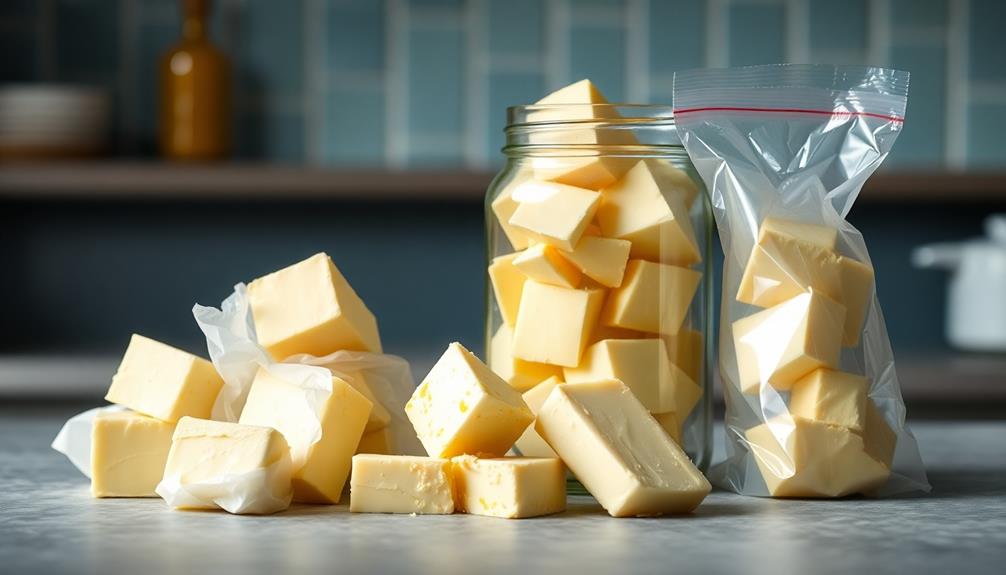
To make the most of the benefits of freezing butter, it's important to know the best methods for doing so. First, consider cutting your butter into smaller pieces. This allows it to freeze more quickly and makes it easier to use later on. You can also wrap each piece tightly in plastic wrap or aluminum foil to prevent freezer burn.
Another effective method is to use ice cube trays. Simply melt the butter, pour it into the trays, and freeze. Once frozen, pop the cubes out and store them in a freezer bag. This way, you can easily grab just the right amount for your recipes.
If you prefer, you can also freeze butter in its original packaging, as long as it's airtight. Just make sure to label it with the date to keep track of freshness.
Proper Storage Techniques
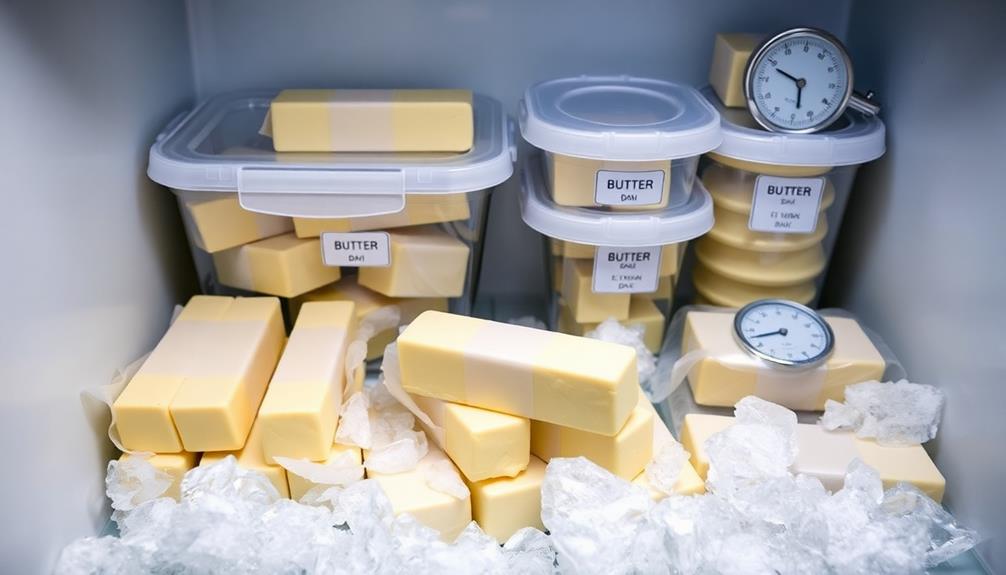
When it comes to storing butter in the freezer, you'll want to make certain it's protected from air and moisture. Proper storage techniques can help maintain the quality and flavor of your butter, ensuring it stays fresh until you're ready to use it.
Here are some effective methods to contemplate:
- Wrap it tightly: Use plastic wrap or aluminum foil to wrap your butter securely. Make sure there are no gaps for air to sneak in.
- Use airtight containers: Place the wrapped butter in an airtight container or a resealable freezer bag. This extra layer of protection helps prevent freezer burn.
- Label and date: Always label your containers with the date you froze the butter. This way, you'll know how long it's been stored and can use the oldest first.
- Portion it out: If you regularly use butter in smaller amounts, contemplate cutting it into portions. This makes it easier to grab just what you need without thawing the entire block.
Thawing Butter Safely
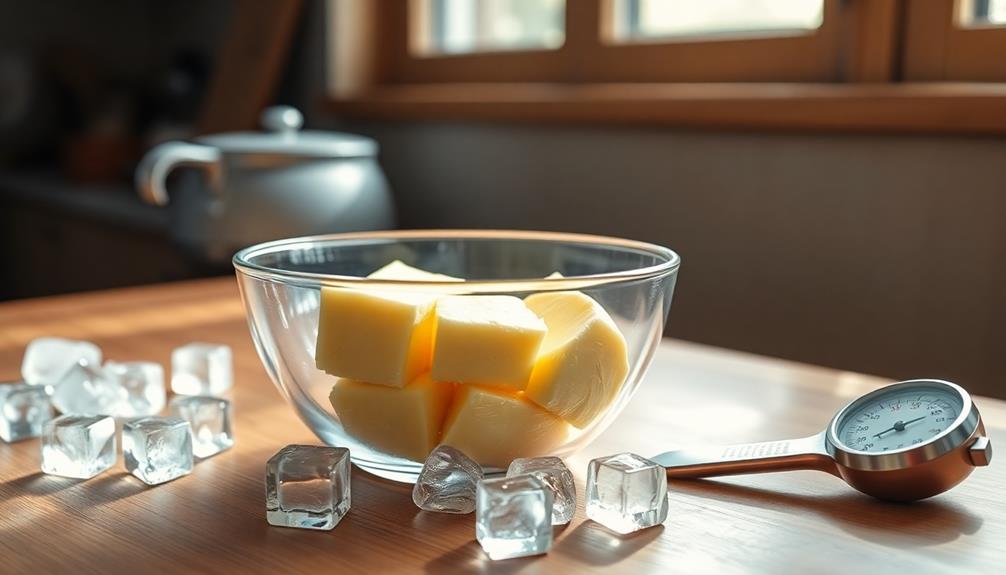
Thawing butter safely is crucial to preserving its texture and flavor. Start by moving the frozen butter from the freezer to the refrigerator. This gradual thawing method keeps the butter at a safe temperature, preventing any risk of bacterial growth. Depending on the size of the butter block, it might take several hours or overnight to thaw completely.
If you're short on time, you can use the microwave, but be cautious. Set your microwave to defrost mode and check the butter every few seconds to avoid melting. You want it soft but not melted.
Another quick method is to grate the frozen butter with a box grater, allowing it to thaw faster and evenly.
You could also cut the butter into smaller pieces and leave them at room temperature for about 30 minutes. Just be sure to keep an eye on it to prevent it from becoming too soft or greasy.
Creative Uses for Frozen Butter
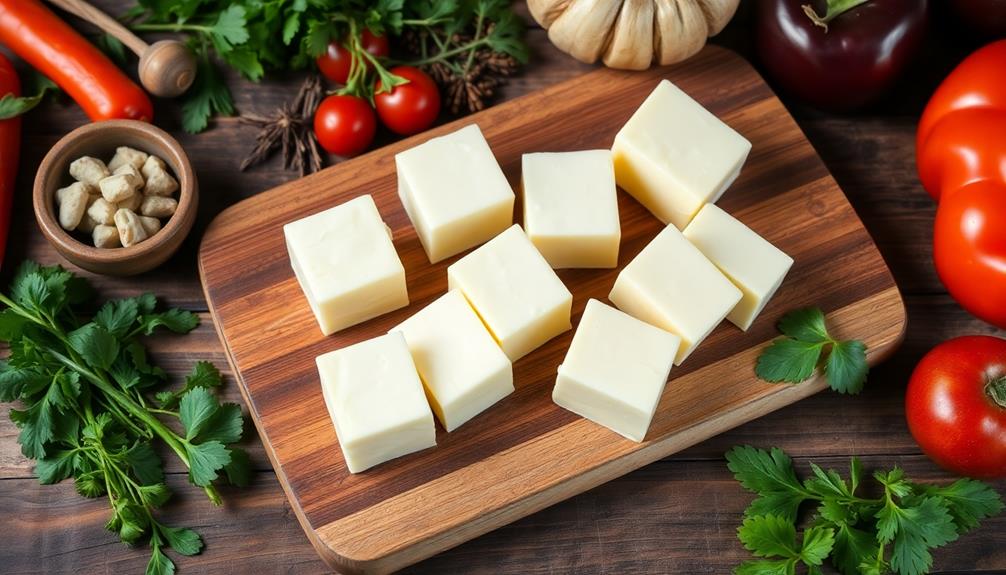
After you've frozen butter, you'll discover that it's not just a storage solution; it can elevate your cooking and baking in creative ways.
Frozen butter retains its flavor and freshness, making it a great addition to your culinary endeavors. When you reach for that frozen block, think beyond just spreading it on toast.
Here are four innovative uses for frozen butter:
- Grate for Baking: Use a box grater to shred frozen butter into small pieces. This technique allows the butter to incorporate easily into doughs for cookies or pastries, ensuring a flaky texture.
- Flavor Boost for Vegetables: Melt some frozen butter and mix in herbs or spices. Drizzle this over roasted or steamed veggies to add rich flavor with minimal effort.
- Quick Sauce Base: Start a sauce by melting frozen butter in a pan. Add garlic, shallots, or other aromatics for a quick and flavorful base for pasta or seafood dishes.
- Portion Control: Cut your frozen butter into smaller chunks. This makes it easy to grab just what you need for recipes without having to thaw the entire block.
With these ideas, frozen butter can become a versatile ingredient in your kitchen!
Plus, it's important to remember that butter storage practices can greatly influence its usability and flavor over time.
Frequently Asked Questions
Can I Freeze Flavored or Salted Butter?
Yes, you can freeze flavored or salted butter. Just guarantee it's tightly wrapped to prevent freezer burn. When you're ready to use it, thaw it in the fridge for the best flavor and texture.
How Long Does Frozen Butter Last in the Freezer?
Frozen butter typically lasts up to six months in the freezer. Make sure it's tightly wrapped to prevent freezer burn. Always check for any signs of spoilage before using it after that time.
Can I Refreeze Butter After Thawing?
Sure, you can refreeze thawed butter—if you enjoy living on the edge! Just remember, it may lose some quality. So, if you're okay with that, go ahead and give it another freeze!
Is Frozen Butter Still Good for Baking?
Yes, frozen butter's still great for baking! It retains its quality and flavor, so you can use it just like fresh. Just make sure to thaw it properly for the best results in your recipes.
Does Freezing Affect Butter's Nutritional Value?
You might worry that freezing changes butter's nutrition, but it doesn't. Freezing preserves its vitamins and minerals, so you can enjoy the same health benefits, whether you use fresh or frozen butter in your recipes.
Conclusion
Freezing butter can be a game-changer for your kitchen routine. Imagine reaching for a stick of perfectly preserved butter, just when you need it for that unexpected baking project. You'll save time and reduce waste, all while enjoying the convenience of having butter on hand. Whether you're whipping up cookies or sautéing veggies, frozen butter is your secret weapon. So, go ahead and freeze some today—you never know when inspiration will strike!
